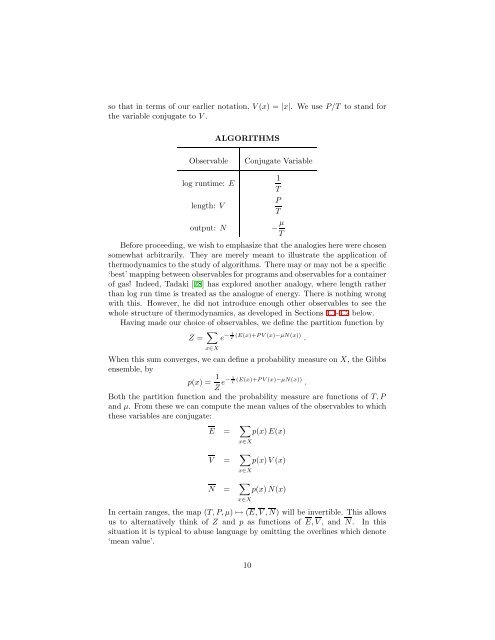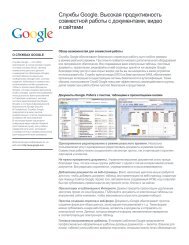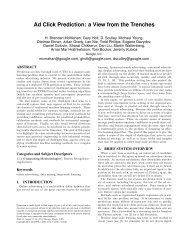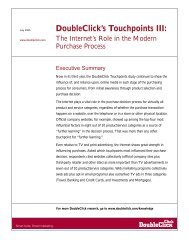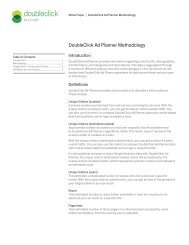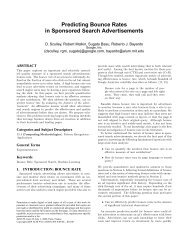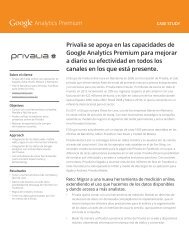Algorithmic Thermodynamics
Algorithmic Thermodynamics
Algorithmic Thermodynamics
You also want an ePaper? Increase the reach of your titles
YUMPU automatically turns print PDFs into web optimized ePapers that Google loves.
so that in terms of our earlier notation, V (x) = |x|. We use P/T to stand forthe variable conjugate to V .ALGORITHMSObservablelog runtime: Elength: Voutput: NConjugate Variable1TPT− µ TBefore proceeding, we wish to emphasize that the analogies here were chosensomewhat arbitrarily. They are merely meant to illustrate the application ofthermodynamics to the study of algorithms. There may or may not be a specific‘best’ mapping between observables for programs and observables for a containerof gas! Indeed, Tadaki [28] has explored another analogy, where length ratherthan log run time is treated as the analogue of energy. There is nothing wrongwith this. However, he did not introduce enough other observables to see thewhole structure of thermodynamics, as developed in Sections 4.1-4.2 below.Having made our choice of observables, we define the partition function byZ = ∑ x∈Xe − 1 T (E(x)+PV (x)−µN(x)) .When this sum converges, we can define a probability measure on X, the Gibbsensemble, byp(x) = 1 Z e− 1 T (E(x)+PV (x)−µN(x)) .Both the partition function and the probability measure are functions of T, Pand µ. From these we can compute the mean values of the observables to whichthese variables are conjugate:E = ∑ x∈Xp(x)E(x)V = ∑ x∈Xp(x)V (x)N = ∑ x∈Xp(x)N(x)In certain ranges, the map (T, P, µ) ↦→ (E, V , N) will be invertible. This allowsus to alternatively think of Z and p as functions of E, V , and N. In thissituation it is typical to abuse language by omitting the overlines which denote‘mean value’.10


